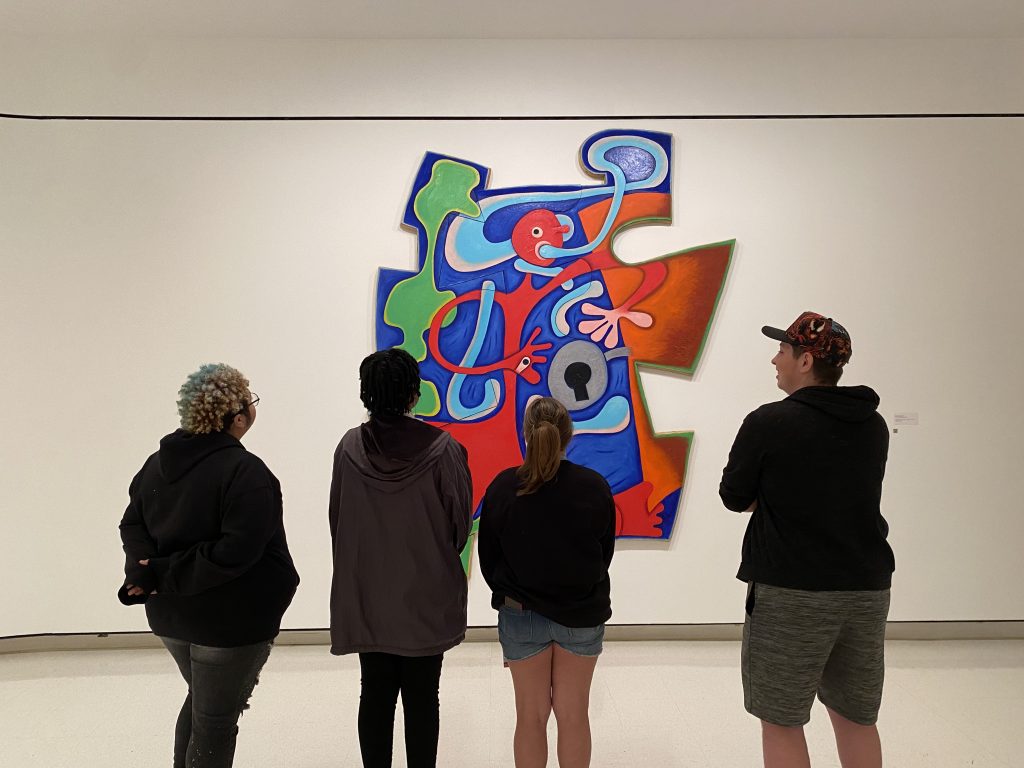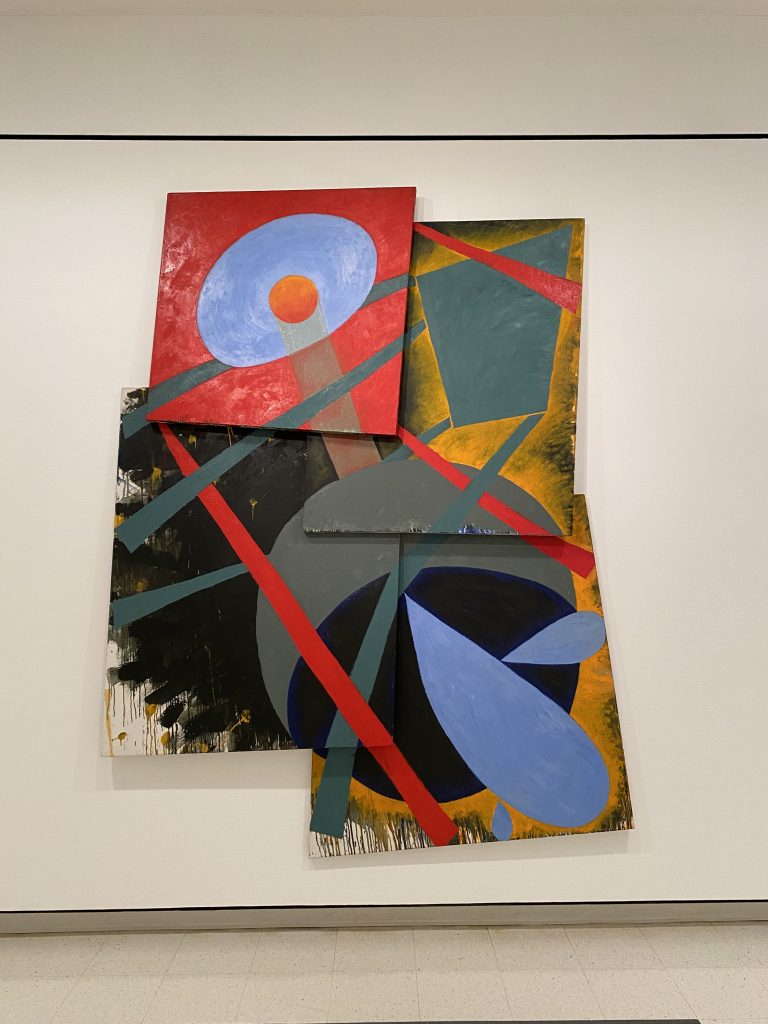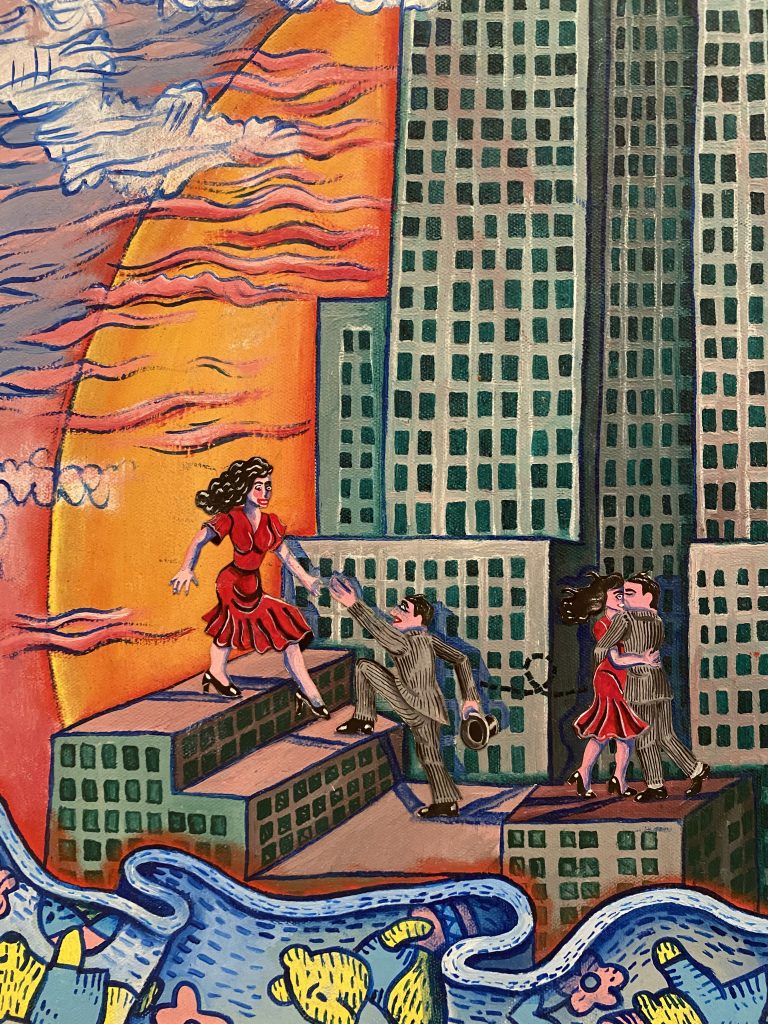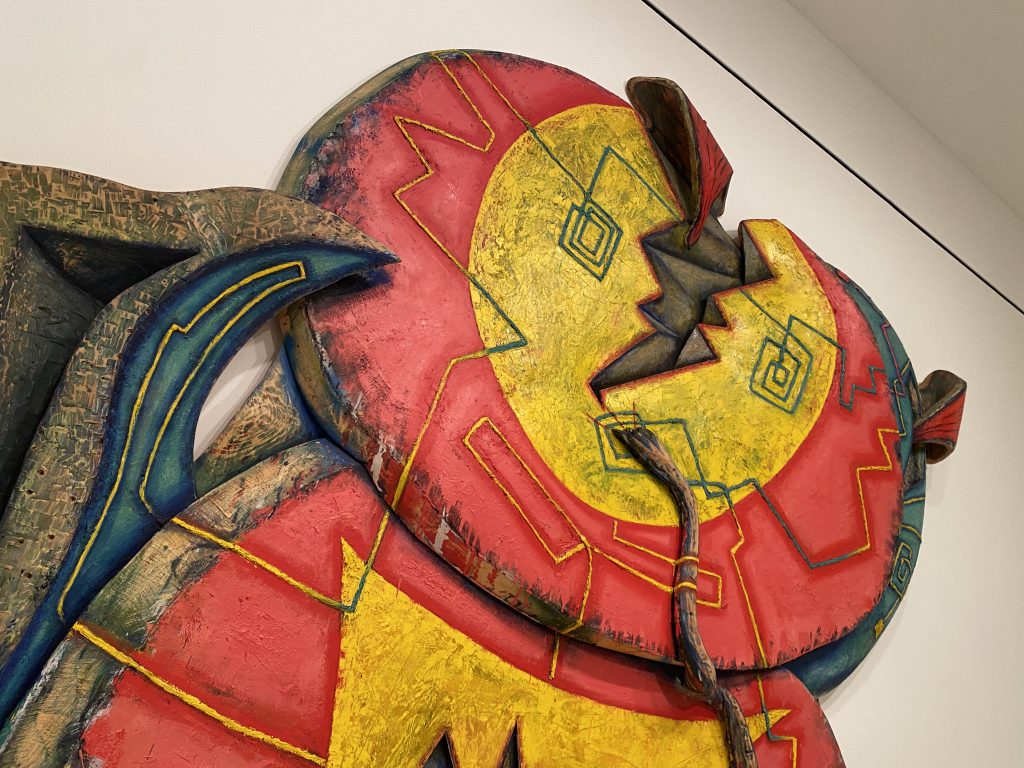The late Elizabeth Murray was one of the only female artists honored with a retrospective of her work in her lifetime by the Museum of Modern Art, in 2005.
When she died less than two years later, there was little mention of her time teaching at Rosary Hill College. Though Murray (then Elizabeth Sunsari) would stay at the college for only two years – arriving in 1965, as a 25-year old – her time in Buffalo was important to her development as an iconic and boundary-pushing painter.
Just ask Daemen alum Robert Scalise ’97. As the curator of 2021’s Back in Town – an exhibition of more than 70 Murray works at the University at Buffalo’s Anderson Gallery – Scalise filled in the canvas, so to speak, on the internationally-celebrated artist’s little-known stint at the college.
“Buffalo was a hotbed of inspiration and creativity at this time,” said Scalise, “But Elizabeth focused on teaching and working somewhat in isolation. She experimented.”
She took the Rosary Hill job, moving from San Francisco, under the assumption there’d be an easy commute to New York City.
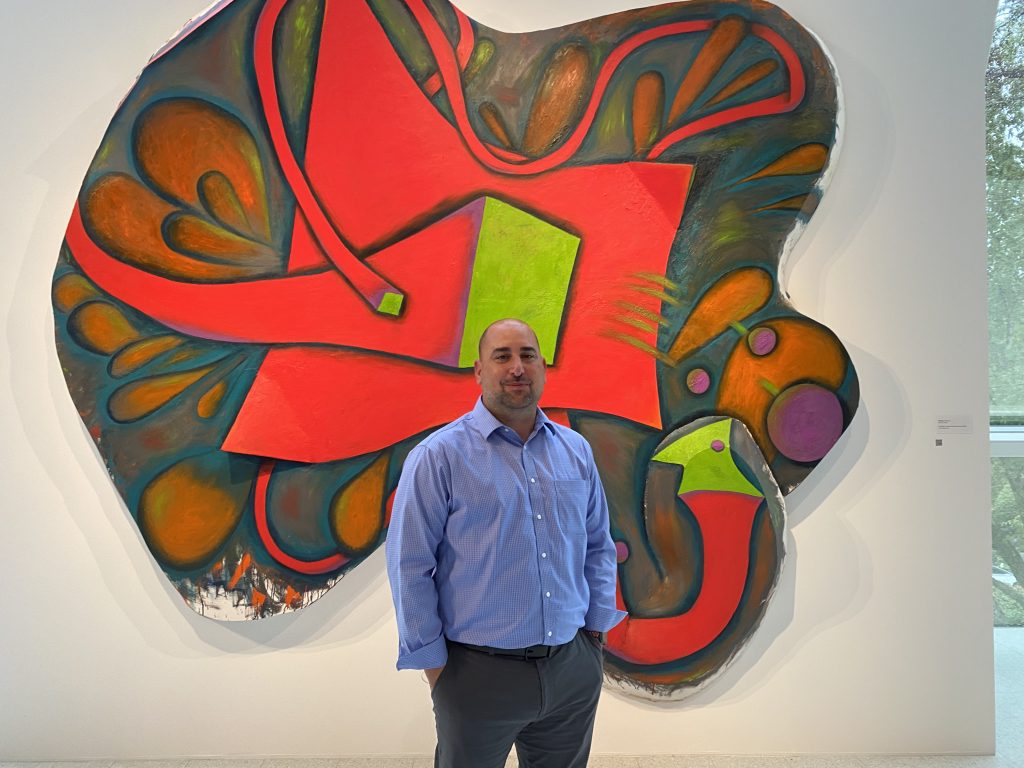
In a basement studio in her east side Buffalo home, she constructed “stuffed sculptures” and “environments.” Her work “changed radically” during this time, Murray said, and set her on a path to become the bold painter known for expansive canvases mixing abstraction and cartoonish figuration.
A 1966 review of her first-ever “one-man” show while in Buffalo opened, “The traditionally minded had best stay away,” with works described as “strange, often grotesque, often funny,” by longtime Evening News critic Jean Reeves.
At Rosary Hill, she was “serious about girls finding their power,” recounted faculty peer Carole Leighton, in the Back in Town catalog. “She was supportive of the students making something of themselves, developing a style of art, following through on ideas.”
When Murray left Buffalo – moving to New York City in 1967 – much of her artwork was set on the curb and scavenged by neighbors. While none of her art from this period is known to survive, pictures and slides document a wide array of abstract pieces.
Contemporary History
For Scalise, Back in Town was an exhibition 20-plus years in the making – tracing back to an art gallery internship he served as a Daemen student.
“I found out that she taught where I went to school,” said Scalise, who earned a bachelor’s studying studio art and art history. “It was sort of like this hidden story.”
Then, a few years ago, a serendipitous work connection in New York City introduced Scalise to Murray’s estate, which lent many of the artist’s works for display in Back in Town – drawing its name from one of the artist’s masterpieces painted toward the end of her life, cut short by cancer.
“Elizabeth’s story stuck with me,” said Scalise. “For a couple of decades, I couldn’t let it go.”
